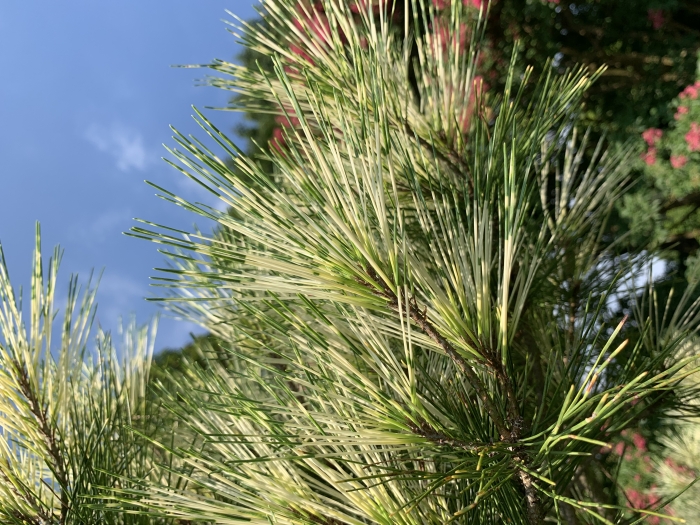Japanese Red Pine
(Pinus densiflora)
Japanese Red Pine (Pinus densiflora)
/
/

KATHERINE WAGNER-REISS
CC BY-SA 4.0









































Estimated Native Range
Summary
This species is often used in ornamental plantings, and its tolerance of poor soils and resistance to pollution make it suitable for urban environments. It is also used in bonsai and traditional Japanese gardens. While it prefers full sun, it can tolerate light shade and requires well-drained, slightly acidic soil. It is adaptable to different soil types but does best with slow or medium drainage. Japanese Red Pine has several popular cultivars that vary in size and form, suitable for different landscape uses. Potential problems include pine wilt disease and pine sawfly infestations. It is not typically invasive outside its native range but should be monitored to ensure it does not outcompete local species.CC BY-SA 4.0
Plant Description
- Plant Type: Tree
- Height: 40-60 feet
- Width: 15-25 feet
- Growth Rate: Moderate
- Flower Color: N/A
- Flowering Season: Non-Flowering
- Leaf Retention: Evergreen
Growth Requirements
- Sun: Full Sun
- Water: Medium
- Drainage: Medium, Slow
Common Uses
Bank Stabilization, Bird Garden, Deer Resistant, Drought Tolerant, Fragrant, Low Maintenance, Rabbit Resistant, Rock Garden, Salt Tolerant, Street Planting
Natural Habitat
Open woodlands and forest edges
Other Names
Common Names: Japanese Pine , Korean Red Pine , Tanyosho Pine , Japanese Umbrella Pine , Japanische Rotkiefer , Pin Rouge Du Japon , Pino Rosso Del Giappone , Japansk Tall , Aka-Matsu , Chi Song
Scientific Names: Pinus densiflora , Pinus densiflora f. umbraculifera , Pinus densiflora var. umbraculifera , Pinus densiflora var. pendula , Pinus densiflora f. pendula , Pinus densiflora var. densiflora , Pinus sylvestris var. sylvestriformis , Pinus funebris , Pinus scopifera , Pinus densiflora f. aurea
GBIF Accepted Name: Pinus densiflora Siebold & Zucc.